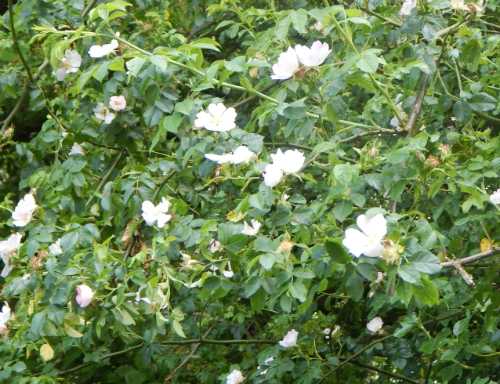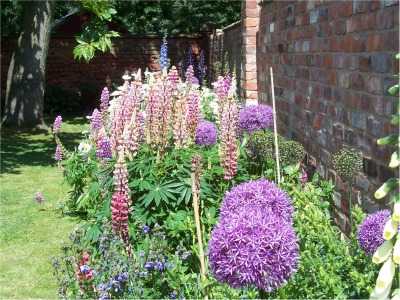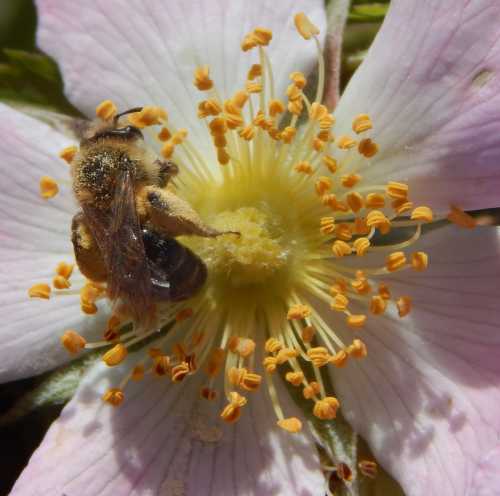Do Bees Like Rosemary?
Rosemary is an aromatic, evergreen flowering shrub.
The slender, needle-shaped leaves have many culinary uses, and the oil is sometimes used for fragrance and medicinal purposes.
However, do bees like rosemary?
The answer is 'yes'.
Honey bees, bumble bees and some solitary species may forage on the flowers.
Why Does Rosemary Attract Bees?
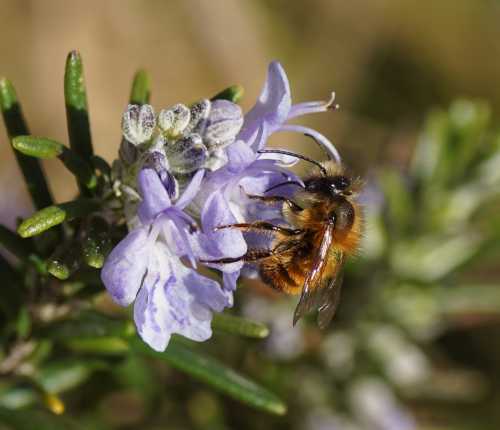 Red mason bee, Osmia bicornis on Rosemary
Red mason bee, Osmia bicornis on RosemaryThe pale, small and delicate flowers provide both nectar and pollen for bees.
Furthermore, Rosemary provides food for bees in spring (from around March onwards) when bee species are establishing their colonies.
The weather may still be cool, and availability of food sources for bees might be limited, especially in cooler climates.
Do Bees Like Rosemary For Its Medicinal Benefits?
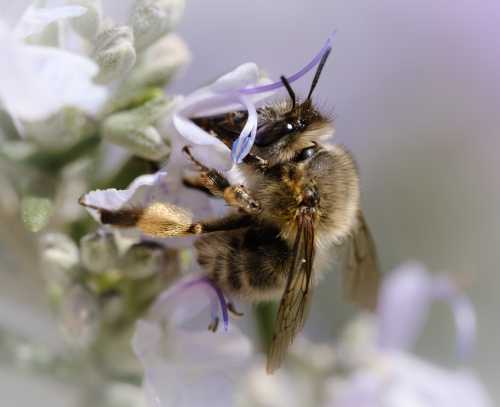 Bee species, probably Macopis foraging on Rosemary
Bee species, probably Macopis foraging on RosemaryIt’s no secret that bees gain medicinal benefits from at least some of the plants on which they forage.
Indeed, bees combat diseases through a combination of their individual and social immune systems.
The social immune system of bees includes colony defence behaviours such as foraging for health-enhancing plant products (e.g. nectar, pollen and resin)1.
For example, tree resins gathered by honey bees to make propolis provide anti-microbial benefits, helping to reduce the growth of bacteria associated with bee disease.
Research suggests that honey bee colonies even increase resin foraging rates after a challenge with a fungal parasite, and this behaviour may signify ‘self medication’2.
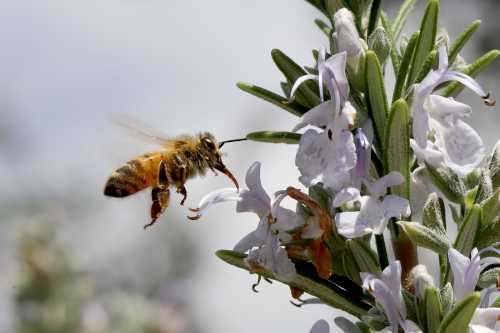 Honey bees also like Rosemary flowers
Honey bees also like Rosemary flowersFurthermore another herb plant (thyme) provides bees with terpenes (primarily from pollen). Thyme terpenes have an antibiotic activity that helps reduce the growth of bee disease and associated bacteria1.
In the case of Rosemary, you'll see from the study described below, that it may provide protective benefits for bees against mites, particularly Varroa mite, which infects honey bee colonies.
However, I am currently not aware of any research investigating the efficacy of Rosemary against mites that infect wild bee species.
Bees, Mites And Rosemary
I understand that some people believe that Rosemary extract repels bees and has 'anti-bee' or even bee-killing properties.
Perhaps at very high doses, Rosemary extract could be harmful. On the other hand, at very low doses, it may be beneficial to bees.
In one study3, a sponge was soaked in a 2ml dose of Rosemary essential oil, which was then applied to beehives infested with Varroa mite.
Compared with the control group, the scientists found that this small dose of Rosemary oil significantly reduced Varroa infestation, with an efficacy rate of 81.32% after the second application.
The bees themselves were unharmed. Laurel oil was also highly effective against Varroa mite.
But Could Natural Foraging On Rosemary Help Bees Fight Mites?
Of course, the study above refers to a small quantity of essential oil of Rosemary applied directly to the beehive.
However, could the activity of bees foraging on nectar and pollen from Rosemary bring the same protection against mites?
I am not aware of any studies assessing this possibility, however, it would seem worthy of investigation.
Afterall, as Wiese et al (2018)1 note:
"In-hive, not only the antibiotic activity of secondary compounds collected by foraging, but also their activity in stored honey, are believed to be of high relevance in terms of colony medication via foraging for health."
In other words, the beneficial properties gained from the application of rosemary oil to the hive, might also be witnessed if bees are able to forage naturally on a sufficient number of Rosemary plants (I would add Laurel shrubs to the list).
However, if beekeepers are tempted to apply Rosemary oil to their beehives, a note of caution is worth adding here, in particular, regarding the evolution of resistant Varroa.
For example, citing Palmer-Young et al (2017)4, Wiese et al note that:
"..repeated and permanent exposure should be avoided to prevent the rapid evolution of pathogen/parasite resistance, as shown recently for thymol and C. bombi."
How To Grow Rosemary For Bees
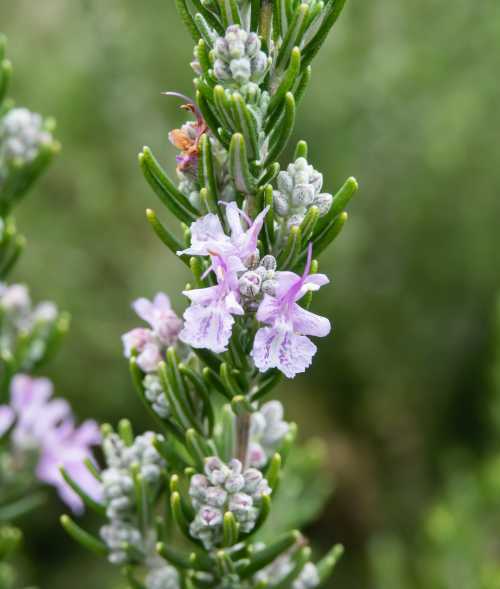
Rosemary (Rosmarinus officinalis / Salvia rosmarinus) is quite easy to grow.
Select a sunny, well-drained, sheltered spot.
A good location might be against a sheltered sunny wall. Alternatively, use a pot that can be relocated to protect it if necessary.
However, do take into account that it will need space to grow and spread, up to about 1 metre / 3.3 feet in each direction.
Years ago, I did once lose a young Rosemary plant thanks to snow!
It’s worth remembering that although Rosemary is grown all over the world, it originates from the Mediterranean region.
References
1. Wiese, N., Fischer, J., Heidler, J. et al. The terpenes of leaves, pollen, and nectar of thyme (Thymus vulgaris) inhibit growth of bee disease-associated microbes. Sci Rep 8, 14634 (2018). https://doi.org/10.1038/s41598-018-32849-6
2. Simone-Finstrom MD, Spivak M (2012) Increased Resin Collection after Parasite Challenge: A Case of Self-Medication in Honey Bees? PLoS ONE 7(3): e34601. https://doi.org/10.1371/journal.pone.0034601.
3. Salima, Koumad & Ml, Berkani. (2016). Comparative Study of the Activity Acaricide of Four Essentials Oils on Varroa destructor Mite of the Honey Bee Apis mellifera in the Center of Algeria.
4. Palmer-Young, E. C., Sadd, B. M. & Adler, L. S. Evolution of resistance to single and combined floral phytochemicals by a bumble bee parasite. J. Evol. Biol. 30, 300–312 (2017).
If you found this page helpful or interesting, I'd really be grateful if you would share it with others - if not this page, perhaps another, such as Gardening For Bees.
Thank you so much :) .

